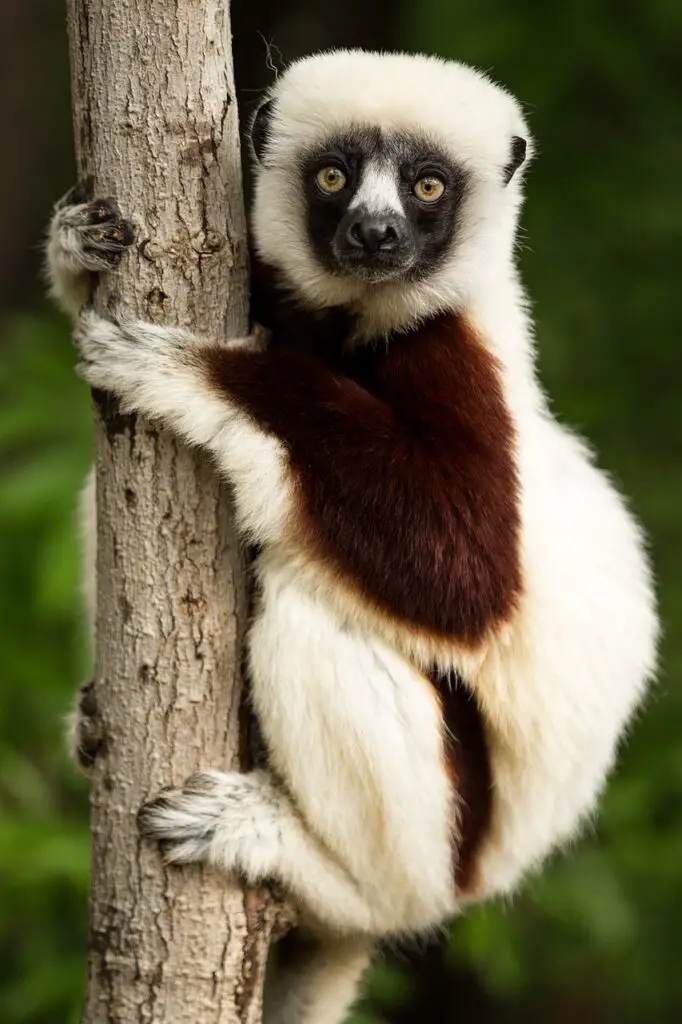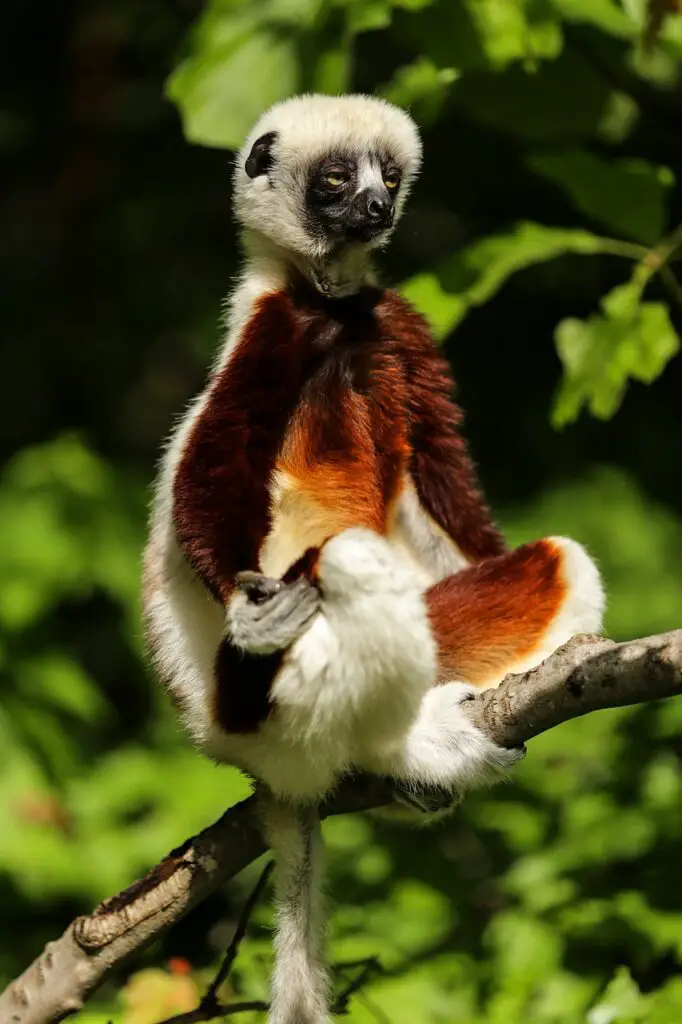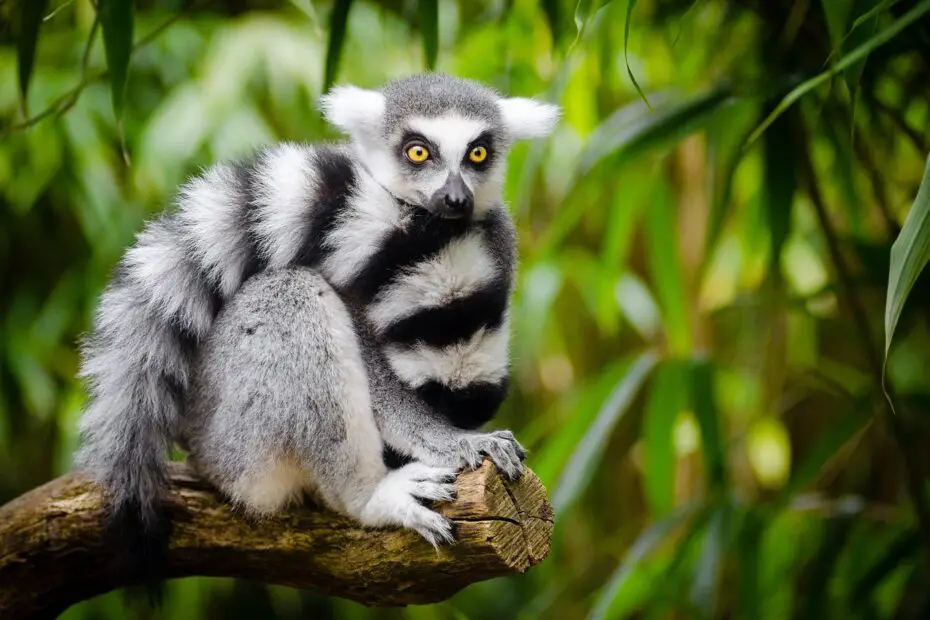Lemurs, with their wide-eyed expressions and lively personalities, have long captured the imagination of nature enthusiasts. These unique primates are native to Madagascar and exhibit a range of captivating traits. However, beyond the world of lemurs lies an intriguing array of animals that share certain physical characteristics and behaviors with these charming primates.
In this article, we will explore the fascinating world of animals that look like lemurs and discover the connections between these diverse species.
You may also want to read about the top 8 big eyes animals.
Lemurs: A Primate Species
Before delving into the realm of lemurs’ look-alike species, it’s essential to understand lemurs as a primate group. Lemurs are native to Madagascar and surrounding islands, making them an exclusive example of primates outside of Africa and Asia. They display a diverse range of adaptations and inhabit various ecosystems, from tropical rainforests to arid regions.

Similar Features: Physical Resemblance
The physical features of lemurs often contribute to their resemblance with other animals. Large, expressive eyes, elongated limbs, and bushy tails are some of the characteristics that are shared by other species, creating intriguing similarities.
Marsupial Animals That Look Like Lemurs
Among the non-primate animals that bear a resemblance to lemurs are certain marsupial species. Marsupials, found mainly in Australia and the Americas, display features that evoke similarities with lemurs. Their unique reproductive system and specific adaptations contribute to their resemblance.
Primates That Look Like Lemurs
Beyond lemurs, the primate order encompasses various species with intriguing resemblances to these charming creatures. Some primates exhibit similar behaviors, such as grooming patterns and social structures, that echo lemurs’ traits.
Lemur-Like Creatures: Prosimians
Prosimians are a group of primates that includes lemurs, as well as other animals with lemur-like characteristics. These diverse creatures share common ancestors and have developed unique adaptations to thrive in their respective environments.
Mammals with Lemur-Like Characteristics
Outside the primate group, other mammals showcase certain lemur-like characteristics. From large-eyed tree-dwelling creatures to bushy-tailed animals, these mammals share intriguing traits with lemurs.
Lemur Mimics: Birds and Insects
Surprisingly, not only mammals display resemblance to lemurs. Certain bird and insect species have evolved to mimic lemurs’ appearance or behavior. This fascinating phenomenon serves various purposes in their survival and interactions with their environment.

Evolutionary Connections
The resemblances between lemurs and other species can be traced back to evolutionary connections. Common ancestors and convergent evolution play a crucial role in shaping the physical and behavioral similarities observed in these animals.
Habitat and Conservation
Understanding the habitats and conservation status of animals that resemble lemurs is essential for their preservation. Many of these species face threats due to habitat loss and human encroachment, underscoring the need for conservation efforts.
Animal Behavior and Social Structure
Comparing the behavior and social structures of lemurs and their look-alike species provides valuable insights into their ecology and interactions within their ecosystems. Each species’ unique behaviors contribute to the balance of their respective environments.
Diet and Feeding Habits
Exploring the dietary habits of animals resembling lemurs sheds light on their ecological roles as consumers. Some species exhibit preferences for specific food sources, while others display diverse feeding strategies.
Importance in Ecosystems
Animals that resemble lemurs play crucial roles in their respective ecosystems. From seed dispersal to pest control, their contributions are essential for maintaining ecological balance and preserving biodiversity.
Cultural Significance
In addition to their ecological roles, certain animals that resemble lemurs hold cultural significance in local beliefs and traditions. Folkloric tales and stories often highlight these animals’ unique characteristics and portray them in various roles.
Conclusion
The world of animals that resemble lemurs is as diverse as it is intriguing. From marsupials to primates and even non-mammalian creatures, these look-alike species offer valuable insights into the complexities of evolution and adaptation. Understanding their significance in their ecosystems and cultural contexts is vital for appreciating the rich tapestry of life on our planet.
FAQs:
1. Are lemurs only found in Madagascar?
- Yes, lemurs are native to Madagascar and neighboring islands.
2. Do lemurs have any predators in the wild?
- Yes, lemurs face threats from natural predators such as fossas and various bird species.
3. Can lemurs be kept as pets?
- It is not recommended to keep lemurs as pets due to their specific dietary and social needs.
4. Are lemurs endangered species?
- Yes, many lemur species are classified as endangered due to habitat loss and human activities.
5. Do lemurs communicate with each other?
- Yes, lemurs communicate through vocalizations, body language, and scent marking to convey information within their social groups.
